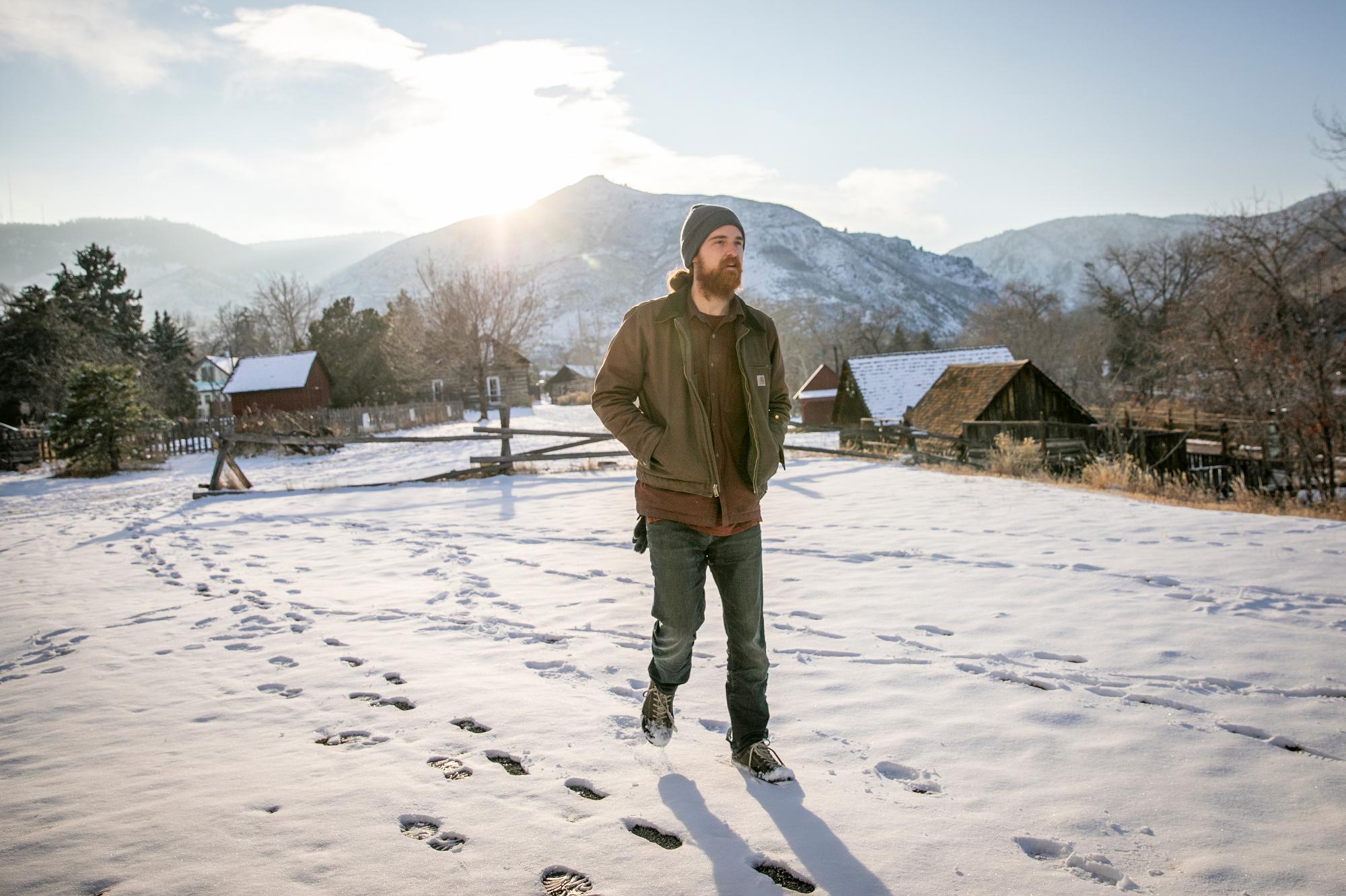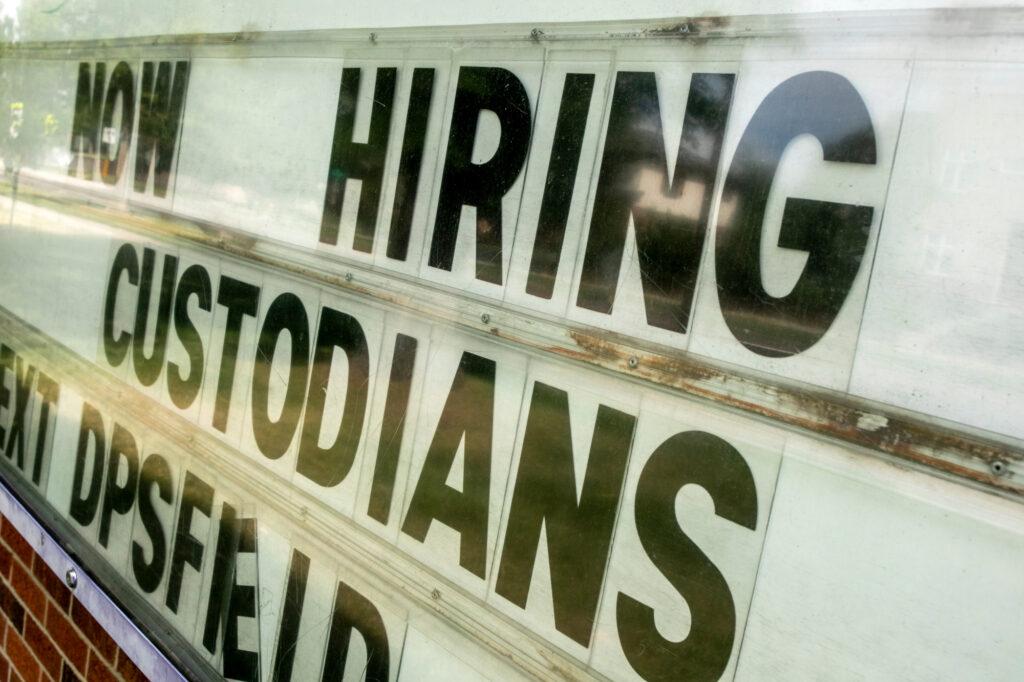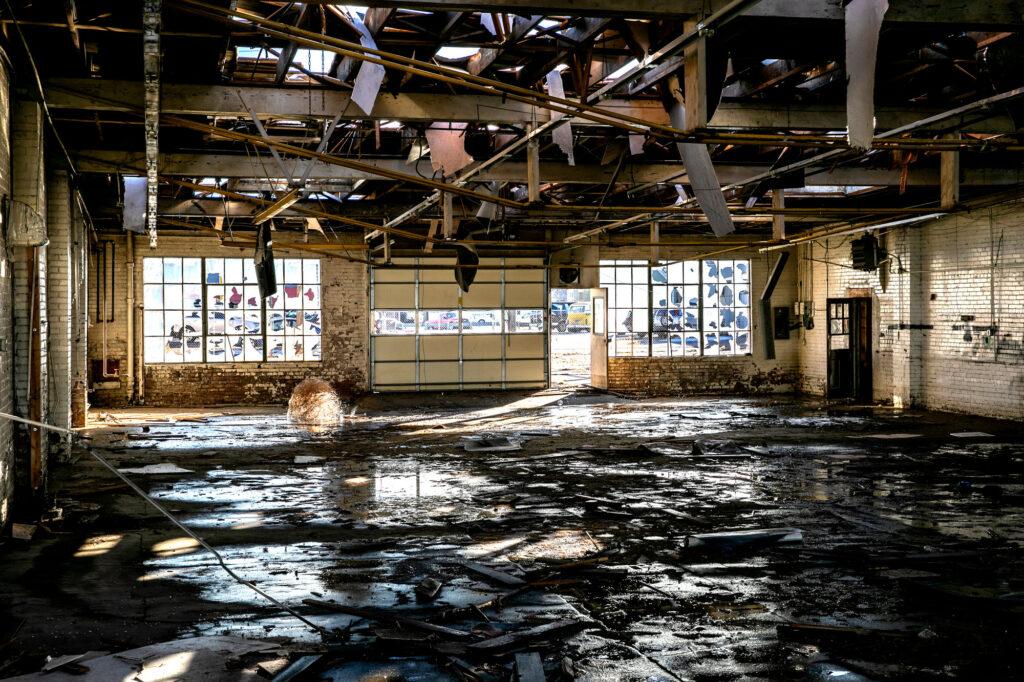
Johnny Morrow paced through downtown Golden on a Sunday in December.
The 29-year-old carpenter hadn’t had steady work since the pandemic began nine months earlier. And he’d been struggling with Colorado’s unemployment system for much of that time.
He had gone without benefits for three months, surviving on odd jobs and his scant savings. By the time winter arrived, he thought he had seen it all — the glitches, the frustrating phone calls, the months-long waits for help. By his calculation, the state owed him thousands of dollars. But he felt ready to simply give up.
“I don't know if I want to be part of this anymore — like, at all,” he said. “This is just too much stress, man. And it's not worth it for me.”
Morrow is a resident of unemployment purgatory, one of perhaps thousands of Coloradans who have waited months for help with unemployment benefits due to mistakes, glitches and confusion. All he needed, he said, was an agent to reset his account so that he could switch unemployment programs after an apparent glitch left him stranded.
There are countless ways to get stuck in this complex limbo where aging government technology meets historic demand and hastily written federal laws. But there’s a common thread: Everyone here is waiting for help from a human being. And that’s been a rare thing.
With the state’s call centers swamped since the start of the pandemic, the average wait time for a help appointment recently stretched to about 40 days, according to CPR News analysis of public records. More than 12,000 requests for appointments were pending as of mid-December, with about half dating to October.
CPR News derived those figures from raw data provided by the Colorado Department of Labor and Employment and confirmed them with CDLE. Those numbers don’t capture the full scope of the problem, either. Because the queue is so long, the state in recent weeks has largely stopped accepting requests for appointments — blocking off what was the only official way to get human help with the main unemployment program.
Tests by CPR News found that on 14 of 17 recent days, the digital scheduling system presented the following message: “Sorry We currently don't have any slots available. Do you have any other questions?”
“I can't speak to anybody for months at a time,” Morrow said. “This is not helping me. It’s horrible. It’s totally destroying a lot of things for me.”
A new approach that debuted this week may help resolve the logjam. A secondary call center staffed by hundreds of contract employees has offered waits under 40 minutes — not 40 days — since Sunday.
“We know we’re not meeting every customers’ need right now. It is a sheer volume issue. We could not possibly hire enough people off the street to be able to handle 100,000 calls coming in every day,” said Phil Spesshardt, benefits services manager for CDLE, at a recent press conference. “But we do continue to look at our processes every day.”

The agency has had to juggle competing priorities amid historic demand — those include a need to crack down on fraud, spin up hastily created new programs from the federal government, implement executive orders from the governor and the president, and complete a long-awaited comprehensive upgrade to its 40-year-old computer system.
CDLE officials say they’re hopeful that the new system and staffers will minimize the frustrations that have built up since the summer. They also are working through the backlog of people waiting for an appointment.
Still, more trials could loom in the weeks ahead. Confusion about the upgraded system, along with the impending debut of extended federal unemployment benefits and the introduction of automated anti-fraud measures all may send more people to the call centers.
"I was shocked"
Carmen O’Grady, 52, booked a callback for help with her unemployment benefits, which had expired unexpectedly, in October. The date the system gave her for that call, Dec. 11, was more than two months away.
“I was shocked — oh, my gosh, very stressed out, appalled, really,” said O’Grady, who lives in Pueblo.
The former psyche nurse and call-center employee survived on food stamps as she waited for her appointment.
“There was going to be no Christmas. I was three months behind on my rent,” she said.
The state launched the “callback” option in July. Instead of waiting on hold for hours, people could simply schedule an appointment later. It worked well at first, with most requests answered within days.
But the limited supply of appointments and the frequent rejection messages created new frustrations, stretching the average wait time past 50 days in October.
When O’Grady finally got the call, it took a CDLE agent just a few minutes to fix the error on her account, which he said was related to her previous unemployment claim.

She was grateful for the man on the other end of the line, who apologized profusely. But she wondered why the state wasn’t focusing more resources on the increasingly desperate people left without benefits.
“He did a great job, but the system is so flawed, so flawed. This should not have taken two months to get a call back, to resolve an issue that took him five minutes to do,” she said.
“Where are these jobs posted? They need to hire more people.”
Solutions in progress
In an interview in December, CDLE executive director Joe Barela said that he anticipated the frustrating waits for help would improve early in the new year.
The state has more than doubled the size of the primary call center staff, but the old software system required months of training before they could really start work.
The changeover to new software last weekend will make it quicker to add staff in the future, though it also has required CDLE to divert hundreds of employees for training — a tradeoff that slowed the department’s support teams over the holiday season.
“Every single employee must be trained on the new UI system,” said deputy executive director Cher Roybal Haavind. “Unfortunately, we don’t have the ability to hire a team of temps to fill their positions. These are very complicated, archaic green-screen systems.”
The switchover to the new system had another big advantage: CDLE has been able to merge the duties of two separate call centers.
Until now, agents at a state-run call center have been the only ones able able to help with regular unemployment cases. A secondary center run by a contractor was dedicated to federal Pandemic Unemployment Assistance, which was running on an early version of CDLE’s new software.
With the two systems finally merged and upgraded, 400 more operators are available to help with regular claims.
Barela also pointed to the department’s smaller tech fixes, including tweaks to the scheduling system and the launch of a new AI chatbot that can help with basic problems.
But it’s not clear yet if these changes will be enough. The hotline was again overwhelmed with callers in the hours after the system upgrade, although the crunch seemed to ease on Tuesday.
The success of the new approach also will depend on whether agents employed by the contractor Conversion Calls, which won about $4.6 million in contracts to run the secondary center throughout 2020, can actually solve callers’ problems.
Searching for alternatives
In the meantime, people have looked for alternatives.
Some have learned they can get Spanish-language appointments much more quickly than using the English hotline. They’ve found faster help from Boulder County’s workforce center in particular. Or they’ve tracked down high-ranking Labor Department staffers who have been known to help with individual cases.
Hundreds have also searched out a few helpful state lawmakers. Democratic Rep. Brianna Titone and Sen. Brittany Pettersen both have won reputations for working with constituents on this. Pettersen has even used leftover campaign money to pay staffers for extra hours to work on unemployment cases.
“We have people being told they can schedule a time to have their question answered in a couple months, which is absolutely unacceptable,” Pettersen said.
She didn’t blame the department, though, saying it’s part of a larger shortage for “critical services in Colorado at every level.”
Erin Joy Swank is a moderator of a Facebook group where unemployed people help each other with their UI troubles. Its membership grows by hundreds of people each time another problem surfaces, she said.
The group “has expanded increasingly, just since Thanksgiving,” she said. Now numbering about 5,000, it has even seen reports of two deaths by suicide of people struggling with benefits, although CPR News could not confirm those accounts.
“Everybody’s hurting. My life is to help people communicate and know what’s going on,” Swank said.
The most common problems
The most common problems fall into a few buckets:
- Many people are struggling with Pandemic Unemployment Assistance. Thousands of people were flagged for potential fraud after the state implemented automated security checks in July, including some innocent people who must wait weeks or months for review.
- People transitioning between programs often encounter problems. For example, if someone exhausts their regular UI and hits a snag while moving to extended federal benefits, it could take months to get an answer.
- Others face confusing messages about ineligibility or exhausted benefits. In some cases, they have simply run out of benefits but don’t understand the language of the notification. Or, for example, they may have been flagged for review due to a dispute by their former employer.
CDLE officials point out that the hotline is jammed in part by people seeking information that is already available online. The department’s new chatbot can answer some questions, and staff are continuously rewriting the labor department website for clarity.
But many people told CPR News that they struggled to find the information they need.
Sometimes, notices from the department are hard for claimants to understand. O’Grady received a letter that listed not one but three different reasons she might have been rejected from an extended benefits program. In her desperation, she eventually opened three separate claims — likely making her case even more difficult to resolve.
“Write like a real person and not legalese,” Swank said. “People do not understand the notice of decisions that they get. People don’t like to read. They don’t like to research.”
It can feel as if a lawyer is necessary to navigate an alphabet soup of programs like PUA, PEUC, and SEB — and the lack of human help raises the stakes, since a mistake could take weeks to fix.
Justin Retzlaff, who lost his job as a project manager, allowed CPR News to watch as he worked with CDLE’s old website. He was trying to figure out what he needed to do to apply for extended benefits, and he agonized over one particularly inscrutable screen.
“I'm now concerned that I'm going to do something here that's going to totally screw it up,” he said. He imagined that if he ever “got a hold of somebody,” they would tell him that he’d made the wrong choice.
A CDLE representative later explained to this reporter that Retzlaff would need to expend the last of his regular benefits before getting an extension. But doing that didn’t work; Retzlaff said he never got a response to his request for extended benefits.
“I would have expected us here in Colorado to be able to put something together that walks people through it a lot more clearly,” he said.
Facing a months-long wait for help, he gave up. He eventually found a new job and left weeks of benefits on the table. “I literally never heard anything back,” he said.
No state is unscathed
These problems are common across the country as limited staff struggle with obsolete technology and a wave of unemployment unlike anything the U.S. has seen before. Demand for benefits in Colorado peaked at a number 10 times higher than the record set in the Great Recession.
“No state is unscathed,” said Andrew Stettner of The Century Foundation, which describes itself a progressive, nonpartisan think tank. “That was a consequence of the infrastructure being fairly weak going into this.”
Colorado’s labor department has done relatively well overall, he said. CDLE debuted the PUA program faster than most other states early in the pandemic, and it has paid benefits faster and more frequently too.
“When you look at the metrics, Colorado has done well compared with other states,” said Stettner, whose 20-year career includes experience operating unemployment programs.
But he wants states across the U.S. to more explicitly address the thousands of people left out in the cold — especially as new unemployment programs approved by Congress are deployed.
“States need to be looking clear-eyed at the backlog that they have in their claims. You need to know what it is and know what your actions are,” he said. And he urged government agencies to put the same urgency on clearing the backlog that they have on fighting fraud.
“As strong sympathy as I have for the states, people have a right for these benefits.”









